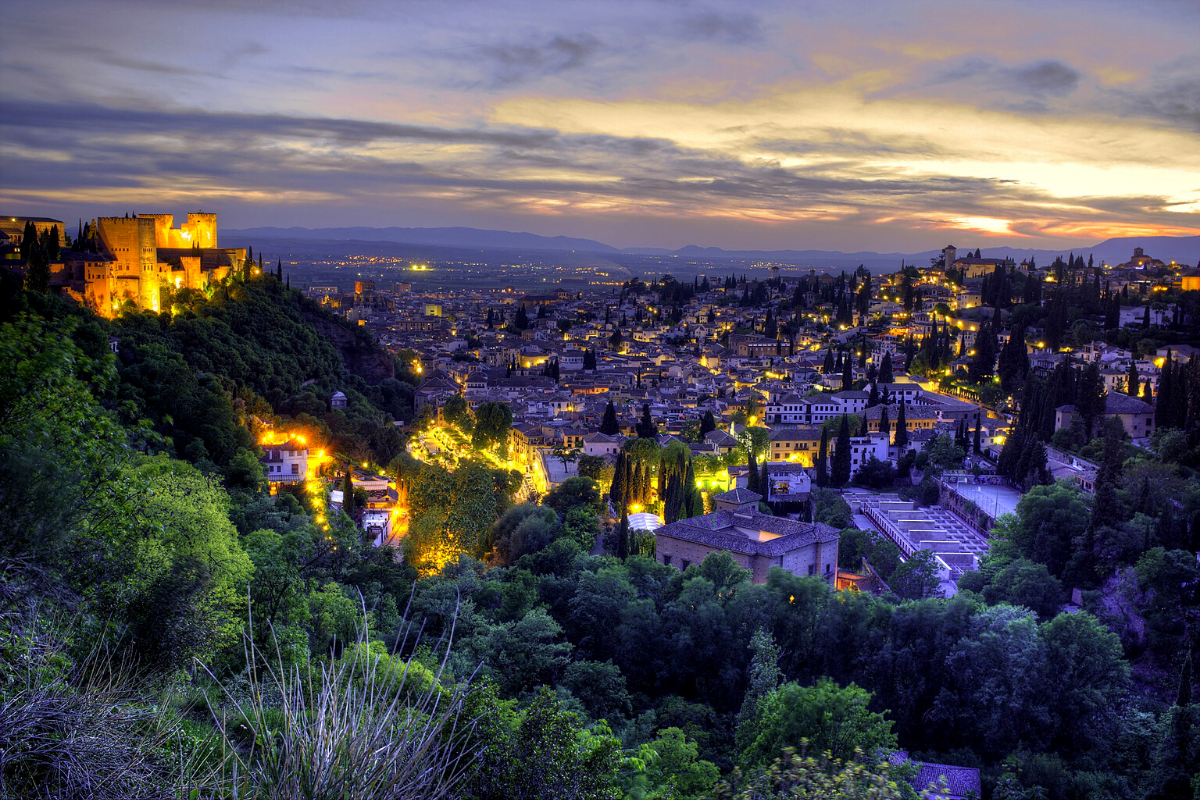This is one of Spain’s most beautiful cities, nestled in the hills at the foot of the Sierra Nevada. A magical place, full of greenery and extraordinary architecture. The landscape in which it is immersed makes it an extremely charming attraction on the Iberian Peninsula. Why visit Granada?
At every turn a story, including a love story
Grenada, unlike the surrounding cities, did not pass its glory days under Roman rule. It achieved great importance on the map of Europe during the Moorish era. For more than 250 years, from 1246, it was the capital of the Nasrid dynasty. During the Reconquista in the Iberian Peninsula, Muslims fled precisely to Granada. The Kingdom of Granada grew in strength, becoming the last Moorish bastion on the Old Continent. At the time of the construction of the Alhambra, the city had a population of around 200,000.
Grenada – set against the backdrop of the snow-capped Sierra Nevada mountains, was one of the first cities founded by the Arabs. It is worth recalling that Muslim rule in the area began in the early 8th century. Interestingly, when the Nasrids ruling the kingdom of Granada decided to build, among other things, the Alhambra palace complex in the region at the turn of the 13th century, nearby Córdoba had long been ruled by Isabella I of Cathar and Ferdinand II of Cathar.
As historical sources indicate, Grenada in the Middle Ages was renowned for its multiculturalism and tolerance. It attracted artists and craftsmen from all parts of the world at the time. The end of Arab rule can be traced to 1469, when Ferdinand II of Aragon and Isabella of Castile married. This event resulted in the unification of Spain. Shortly afterwards, in 1482 to be exact, an armed invasion of the emirate of Granada began, culminating in the siege of the city. For Granada, the triumph of the Spanish rulers meant the rebuilding of the city. Monasteries and churches began to be built, and buildings that remembered the days of Muslim rule began to disappear from the landscape.
The fate of the kingdom was decided by matters of the heart, when the Grenadian ruler Mulay Hassan fell in love with a Christian woman and decided to leave his wife, the mother of the heir to the throne Boabdil, for her. The internal troubles of the rulers of Granada were cleverly exploited by Ferdinand V, who kidnapped Boabdil and demanded his submission in return for his release. Thus, as the Christian rulers attacked the city, Boabdil did not put up a fight and fled. Thus, 2 January 1492 went down in history as the day the last Moorish kingdom in Spain fell. The conquerors of Granada, Isabella of Castile and Ferdinand V, wished to be buried within the city, and their tomb, the Capilla Real, is richly decorated with paintings and insignia of royal power.
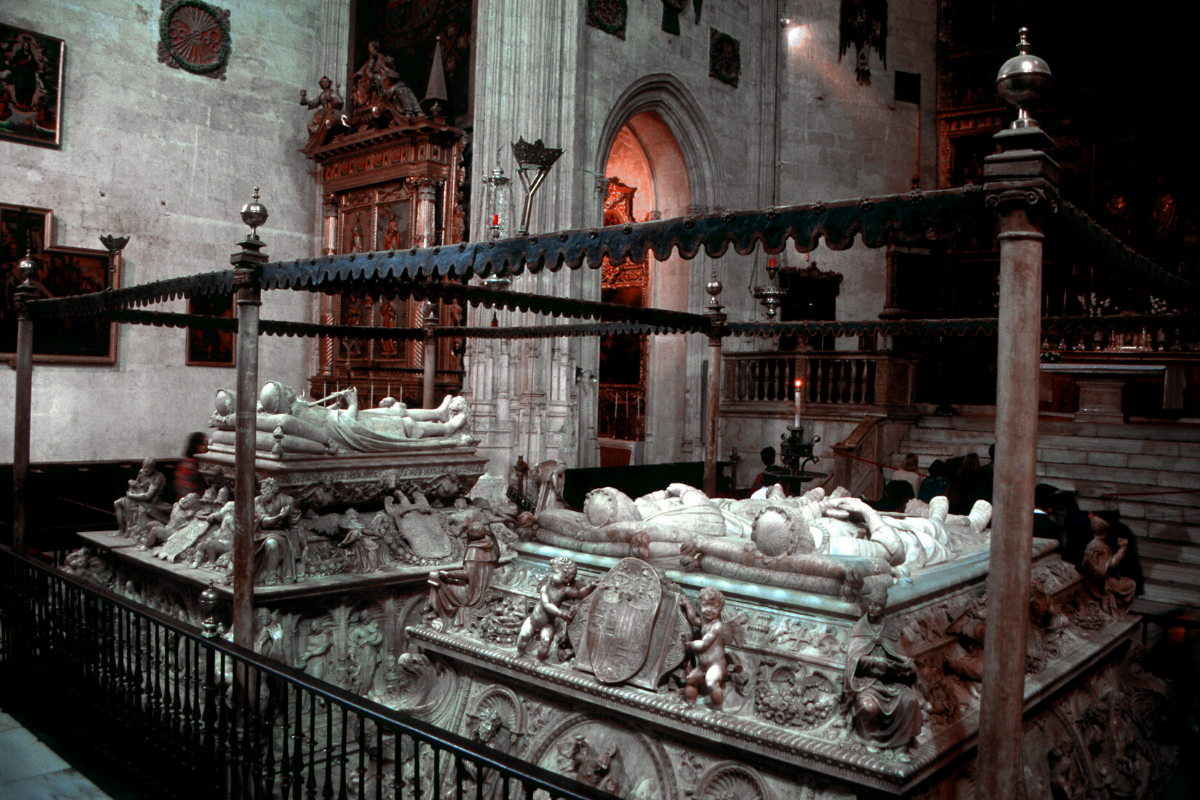
Alhambra – a must-see place
When visiting Granada, it is important to remember that the two key attractions – the Alhambra and the Albicín – are located on two opposite hills, separated by a deep valley.
Towering over Granada, the Alhambra palace complex was built by the Arabs. If you want to get to know the place well, it is even worth spending a whole day to feel the spirit of the Alhambra’s history. The district is a UNESCO world heritage site.
What you must see when visiting the palace and park complex is the Nasrid palace with its magnificent Court of Lions and beautiful decorations, the ruins of the Alcazaba fortress and the Generalife summer palace. The Alcazaba, or Alhambra hill fortress, is not only an exceptional monument of ancient architecture, but also the location of two museums: the Alhambra Museum and the Museum of Fine Arts. Nearby, you can find the 19th-century Carmen de los Mártires garden, representing the eclectic Anglo-French style.
The palace-fortress rising above the city is a delight to behold. The uniqueness of this architecture is reflected not only in the mass of the building, but also in the splendour of the decoration, the ornaments covering the columns and walls and the tiles decorating large parts of the chambers. The high walls conceal a palace worthy of the ruler of an important and powerful kingdom, with green courtyard gardens, gushing fountains and blooming flowers. If you want to travel to “another dimension” for a while and enjoy the beauty and mystery of this place for longer, it is worth staying at the Hotel Parador de Granada, which is located right in the centre of the Alhambra.
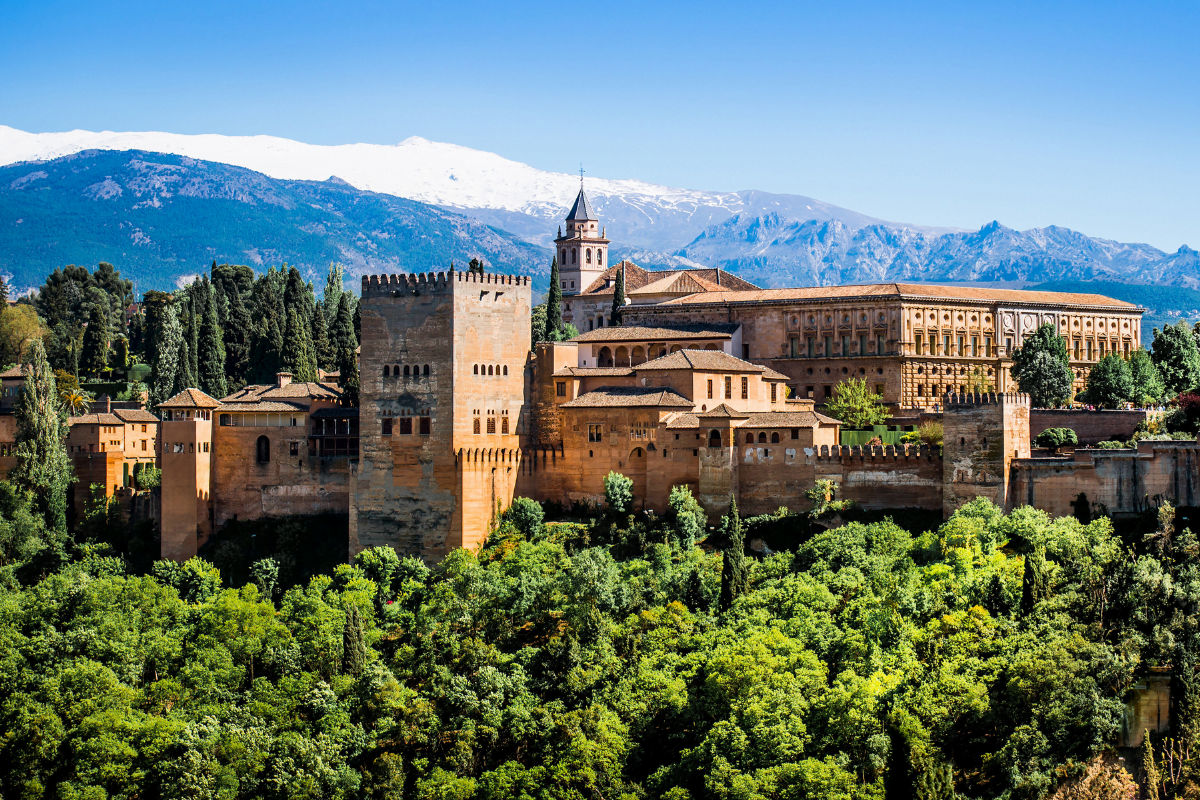
Visit the magical gardens
“Quien no ha visto Granada, no ha visto nada” (“Whoever hasn’t seen Granada hasn’t seen anything at all”) – this old Spanish saying perfectly captures the spirit of one of the most beautiful cities on the Iberian peninsula. Granada’s fertile soils have allowed the cultivation of plants from many corners of the world. In the Palacio Generalife, right next to the Alhambra, you can admire the beautiful gardens, designed by an architect unknown by name. Many species of trees and flowers grow around this 13th-century Arab residence. The whole is complemented by pavilions and water trickling down the stream and falling in many cascades at the Camino de la Cascada.
Each of the nations that ruled these lands brought vegetation with them. The Moors liked to plant aromatic mint and basil, and brought orange trees to Spain. Olive and date trees and vines came here with the Greeks and Romans. Although geraniums, which often also bloom on balconies in Poland, are thought to have originated in Andalusia, they came here from… South Africa. For lovers of architecture, a must-see on the itinerary of exploring and discovering Granada will certainly be the Palacio Dar al-Horra. This is a recently restored building that belonged to the Arab rulers of Granada. By visiting this place, it is relatively easy to imagine what life was like here in Arab times.
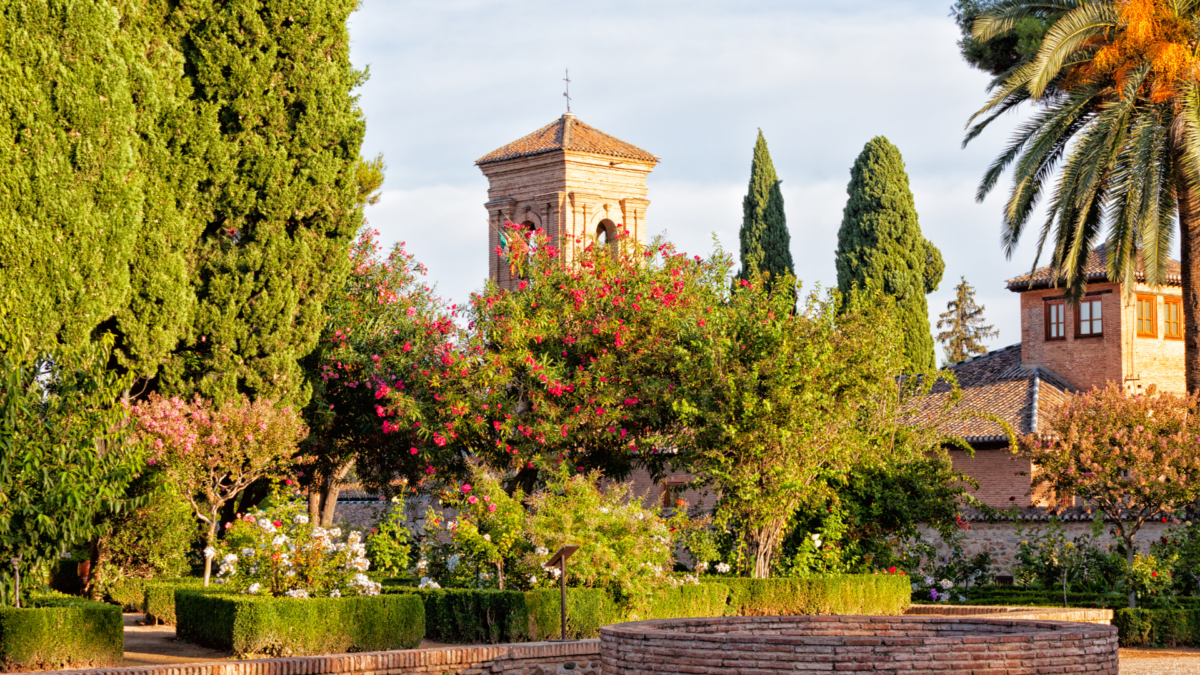
Symbol of triumph over the Moors
When going to Granada, a visit to the local cathedral should not be forgotten. In the regions where the Arabs had previously ruled, the Catholic rulers tried to build monumental temples after recapturing these areas. This was also the case in Granada, whose cathedral can be seen from almost anywhere in the city. Today, the temple in Granada is one of the largest in Spain! The Catholic Kings who ruled the area centuries ago are buried in the chapels.
The cathedral was built on the site where an Arab mosque once stood. Its construction was directly intended to symbolise the triumph of Christianity over Islam and it was originally built in the Gothic style. In the 16th century, it was decided to transform the temple into a royal mausoleum. At the heart of the cathedral is a presbytery with a rotunda in the Italian Renaissance style, which was to serve as the royal pantheon. It is worth knowing that the cathedral is open to the public, but requires the purchase of an entrance ticket. What catches the attention of tourists is the monumental façade from the 17th century.
On leaving the temple, follow the Calle Oficios street to a square with two of Granada’s monuments: The Royal Chapel (Capilla Real de Granada) and the former Gothic stock exchange building (Lonja de Mercaderes). The first building is the eternal resting place of the initiators of its construction, the Catholic Kings Ferdinand and Isabella. In the sacristy is located a museum with a collection donated by Isabella, including works by artists such as: Hans Memling, Rogier van der Weyden, Pietro Perugino or Sandro Botticelli.
Adjacent to the Royal Chapel, you will also find the baroque Palacio de la Madraza – located on the site of a former Muslim Koranic school in Arab times. Another architectural gem is the Corral del Carbón, or caravanserai (caravan depot house) from Arab times. It was here that accommodations and a warehouse for merchants and their animals functioned in the 14th century.
On the way out of the cathedral, it is worth heading to Reyes Catolicos Street and Carrera del Darro. This is today one of the main thoroughfares in the city, around which the life of the local community revolves and, of course, the attention of tourists is focused. The locals refer to this part of town as Paseo de los Muertos. Why such a name? One legend has it that it comes from the story of the last Arab ruler who left Granada in shame. However, another theory emphasises that this is where funeral processions used to travel and hence the name of this route. This is an extremely attractive place for tourists. Many pubs are located here, and there is no shortage of street vendors selling souvenirs.
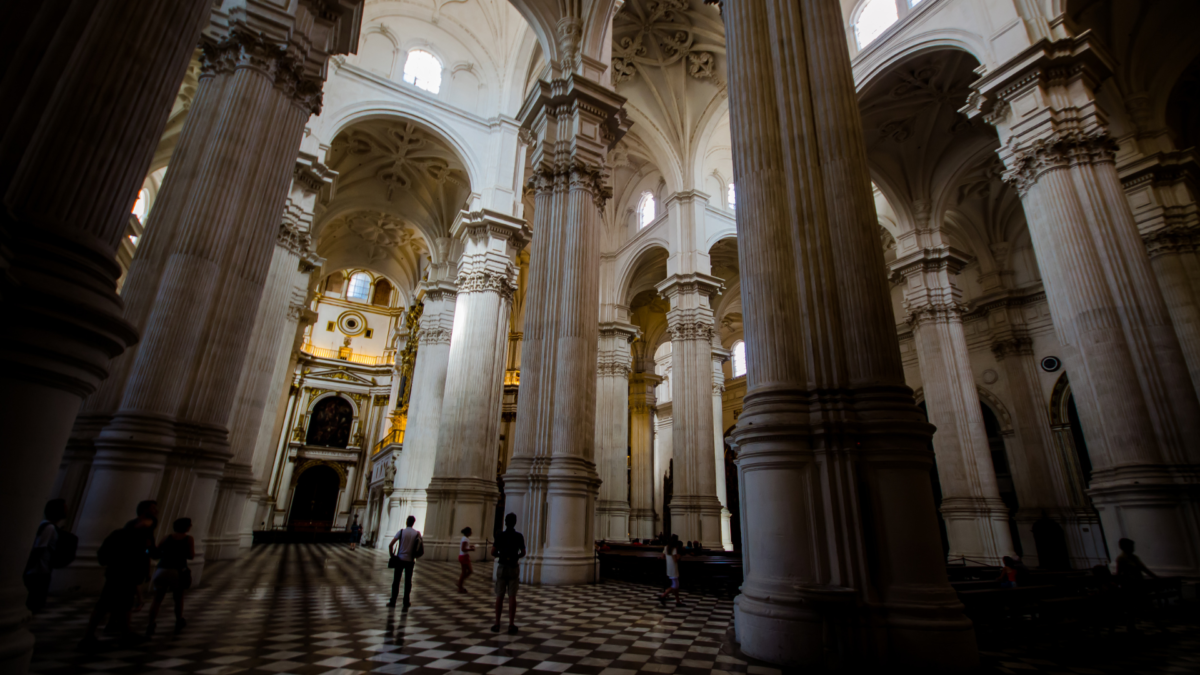
Granada’s Arab heritage
How can you discover the city’s Muslim past? By visiting the Albaicin – the former Arab quarter. The streets of this part of the city have been paved with stones – this is because the Arab horses of Grenada’s historical rulers were not wrought iron and moving over the cobblestones was no problem for them. A visit to Albaicin is an opportunity to look at the remains of Arab architecture. After the reconquest, much of the Arab heritage was destroyed. Today, the medieval layout of the district and individual Moorish monuments remain.
It is worth noting that long stretches of 11th and 14th century Arab defensive walls, as well as gates dating back to the 11th century, have been preserved in the Albaicín area. One of the most interesting points photographed by tourists is the Puerta de las Pesas, or Weigh Gate. This is where, centuries ago, the weighing of goods brought into the city by merchants took place. The other distinctive city gate worth visiting is the Elvira Gate – a structure erected 1,000 years ago in the 14th century and given its present shape. The city’s Arab history is also evidenced by the Alcaicería, a marketplace that harkens back to a medieval bazaar.
Undoubtedly an eye-catcher for tourists are also the ancient Arab baths, which have been preserved virtually unchanged to this day. Centuries ago, the ritual was as follows – in the morning, men would come to the baths to take care of their hygiene. As a result, they were places where not only health and cleanliness were taken care of, but also various private and public interests were taken care of.
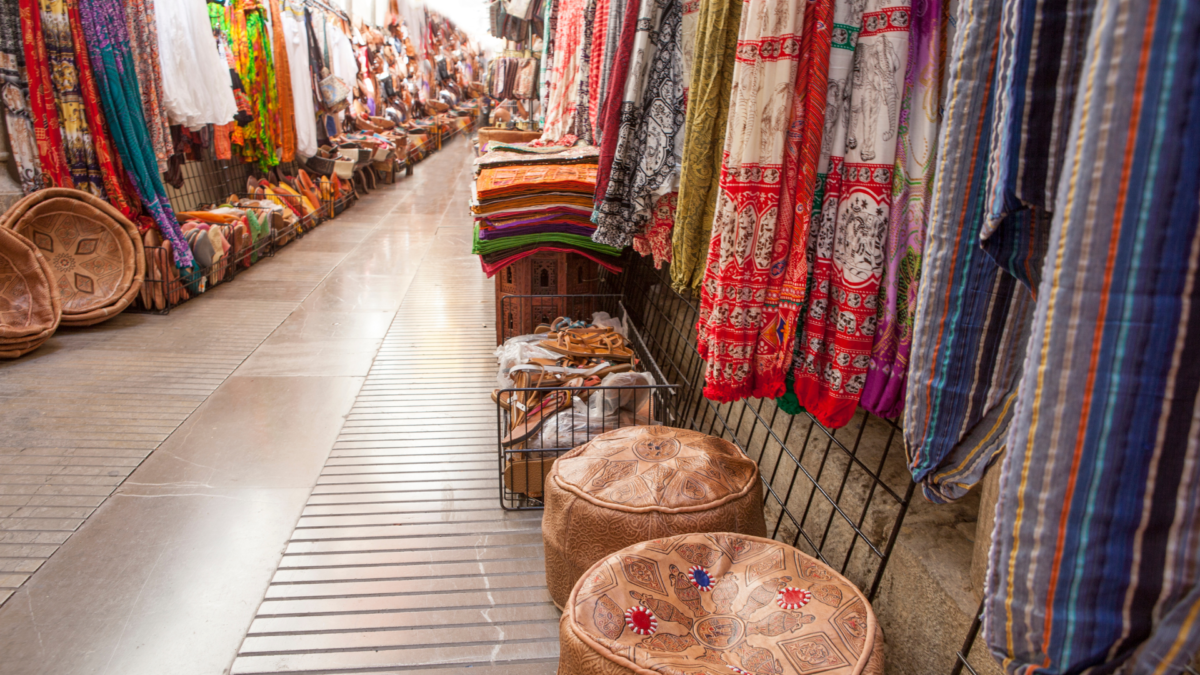
Exploring the history of the Iberian Peninsula
Granada’s Catholic history includes, for example, theMonastery of St Jerome(Monasterio de San Jeronimo). This site has been transformed into the mausoleum of the Grand Captain, one of Spain’s most distinguished military commanders. A similar site is the Carthusian Monastery of Granada(Monasterio de la Cartuja) located approximately 2 km from the cathedral.
If you are looking for unique photos, it is worth going to one of the viewpoints. The most popular one is undoubtedly the Mirador de San Nicolás. Relatively close to this location is Grenada’s unique mosque. Heading to the gardens there also offers phenomenal views of the city and its surroundings. The viewpoint called Mirador de la Vereda de Enmedio is also popular with tourists.
For anyone looking for atmospheric and memorable places, a visit to the Calderería Nueva should be suggested. It is a tourist street, very narrow and full of stalls and souvenir shops. Without a doubt, a visit to this place will not only make you leave the city with awe-inspiring souvenirs, but will also make you feel the historic spirit of the city.
For architecture lovers, the Palacio de la Real Chancilleria, the Palace of the Royal Chancellery in Granada, is also worth recommending. The building is still the seat of the court today and is distinguished by its Mannerist façade. A fountain was erected in the inner courtyard – it dates back to 1540 and may have been the work of Diego de Siloé. From here, it is really close to Plaza Isabel La Católica. At the heart of the site is a bronze monument depicting Christopher Columbus and Isabel the Catholic signing the Santa Fe Agreement. The agreement was made in 1492 at a military camp near Granada. It granted Columbus numerous titles (including admiral and viceroy), privileges and profits from all lands discovered.
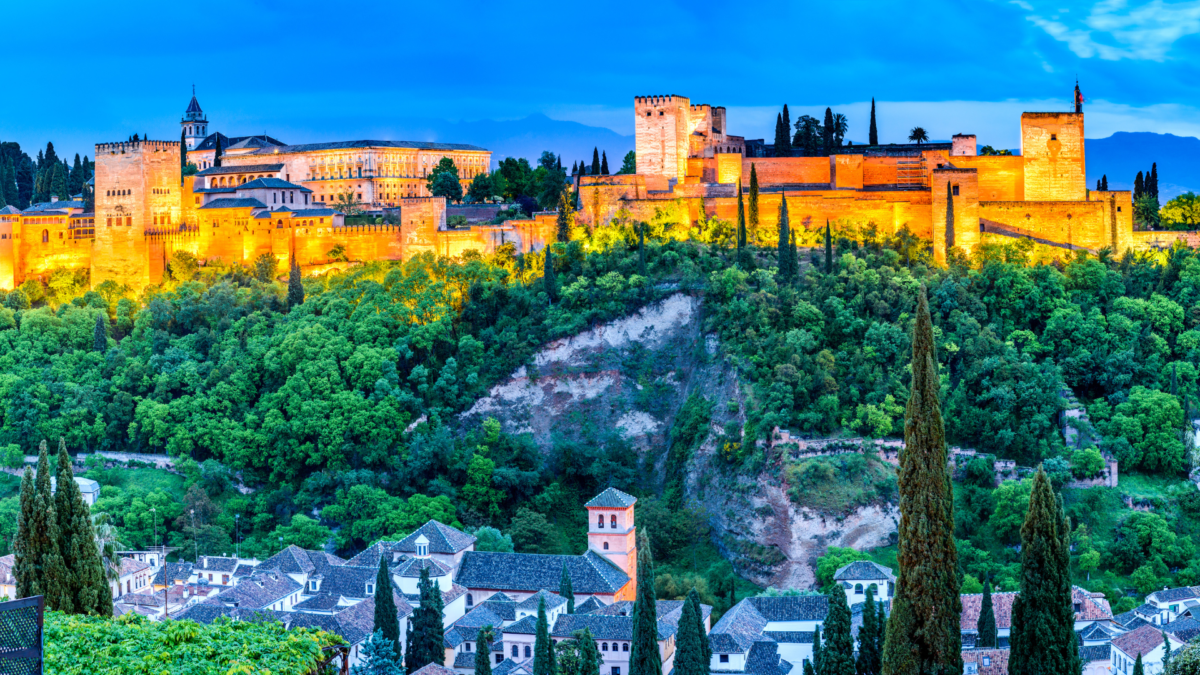
The multicultural heart of Andalusia
Another part of the city, related to the minorities living in Granada, is the Sacromonte district. This is the bohemian part of the city, more residential. If you want to taste the music from this region, this is the neighbourhood to visit. Why? It is in the streets there that you will find the famous caves. This is where the Gitano, the Spanish Roma who contributed to the creation of flamenco, have lived for centuries and where you can experience first-hand demonstrations of the Spanish dance. In the district, the Museo Cuevas Sacromonte with its ten dwelling caves is worth a visit. Nearby is the Sacromonte Abbey(Abadía del Sacromonte).
The presence of the Jewish community in the city is evidenced by the El Realejo neighbourhood, where you can still feel the authentic atmosphere of the place centuries ago. In some ways, it is reminiscent of the narrow streets of Albaicín. A place worth visiting, for example, is the district’s main artery, Calle Navas Street. It is worth discovering Granada culinarily, in one of the traditional bars with tapas, or Spanish snacks. Interestingly, the tapas sets change from time to time. As a result, the tourist never knows what he or she is going to get on his or her plate – certainly an ideal way to explore the Iberian Peninsula culinarily.
Without a doubt, Grenada is a must-see destination. Not only are the popular sights worth visiting, but you can also immerse yourself in the city’s history and culture. For those who like to experience space, we recommend spending an evening in Granada and savouring the city’s nightlife. On the other hand, the proximity to the Sierra Nevada mountains in summer makes it possible to hike and enjoy nature, and winter sports in winter. Granada is a place where history, culture and nature create a unique atmosphere that is sure to remain in the memory of every visitor.

